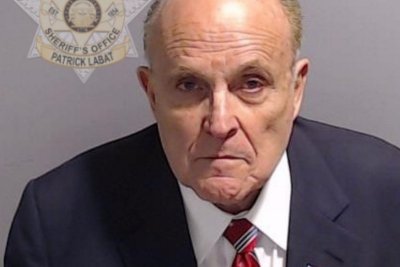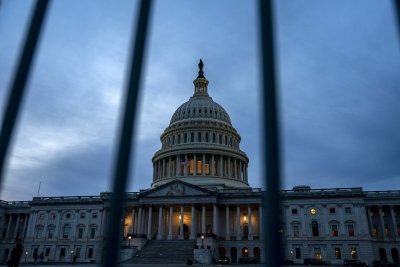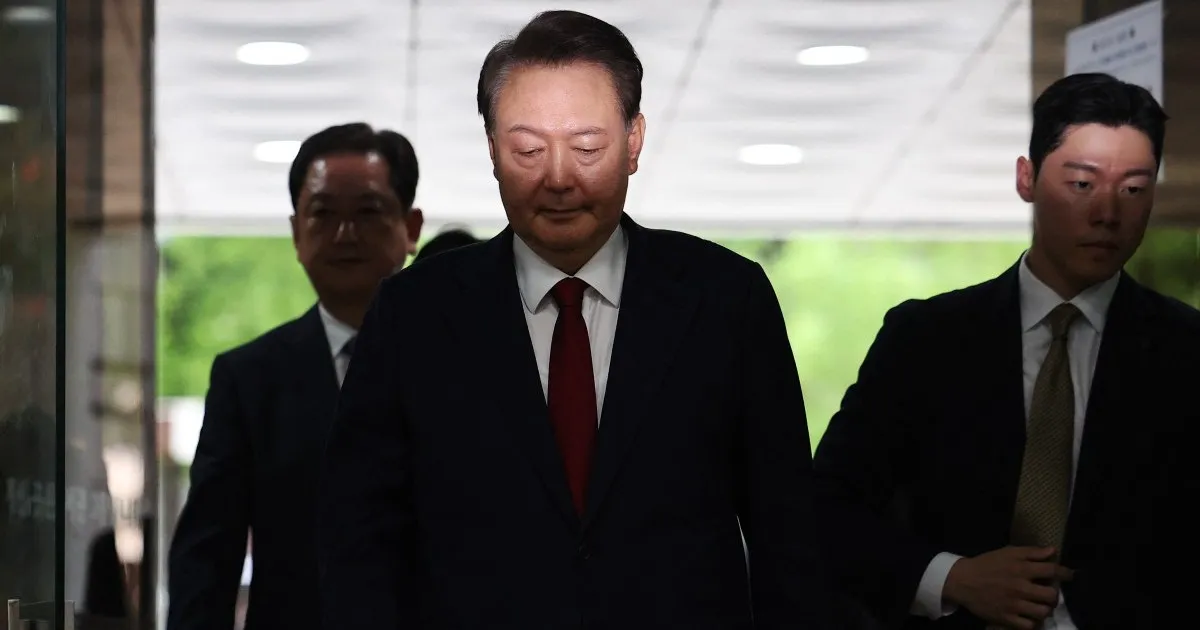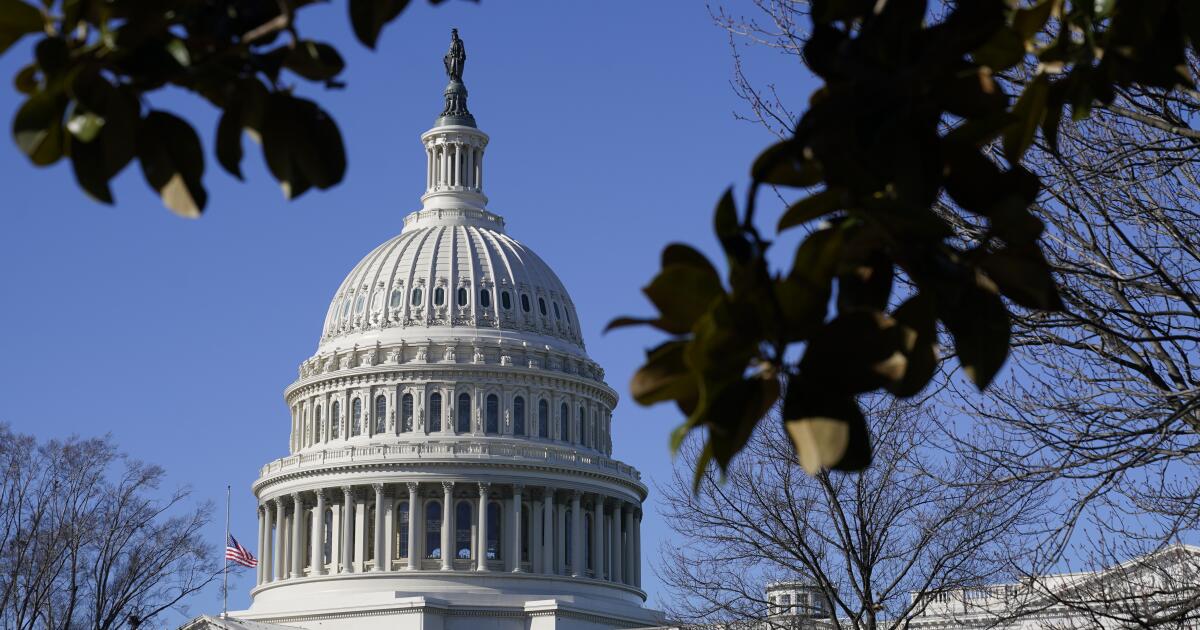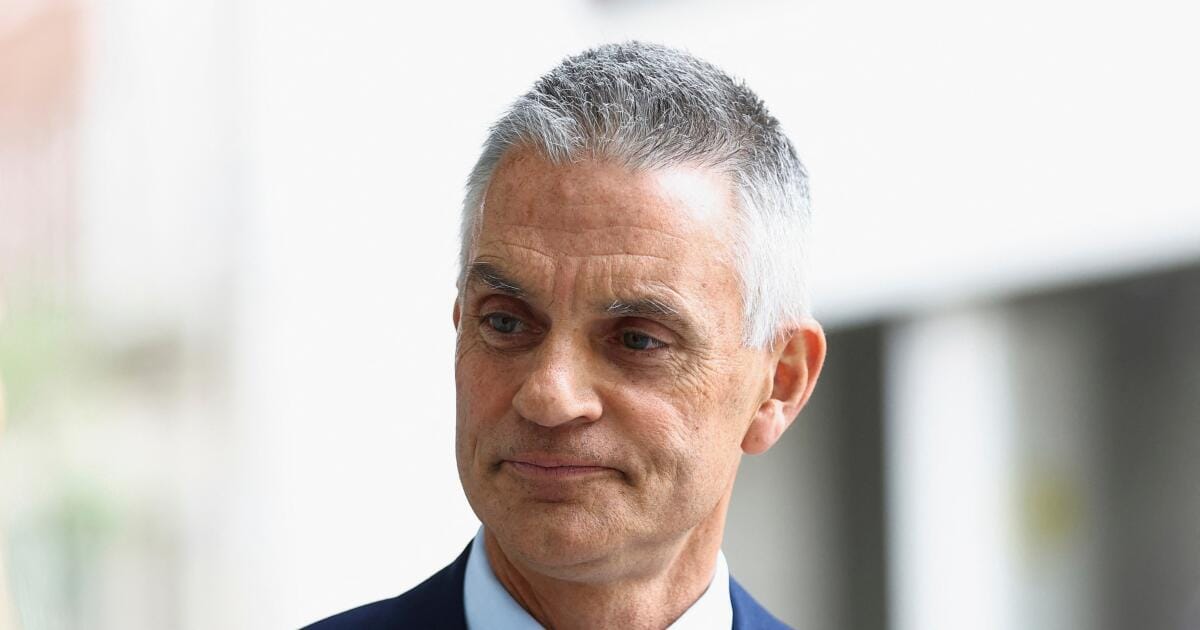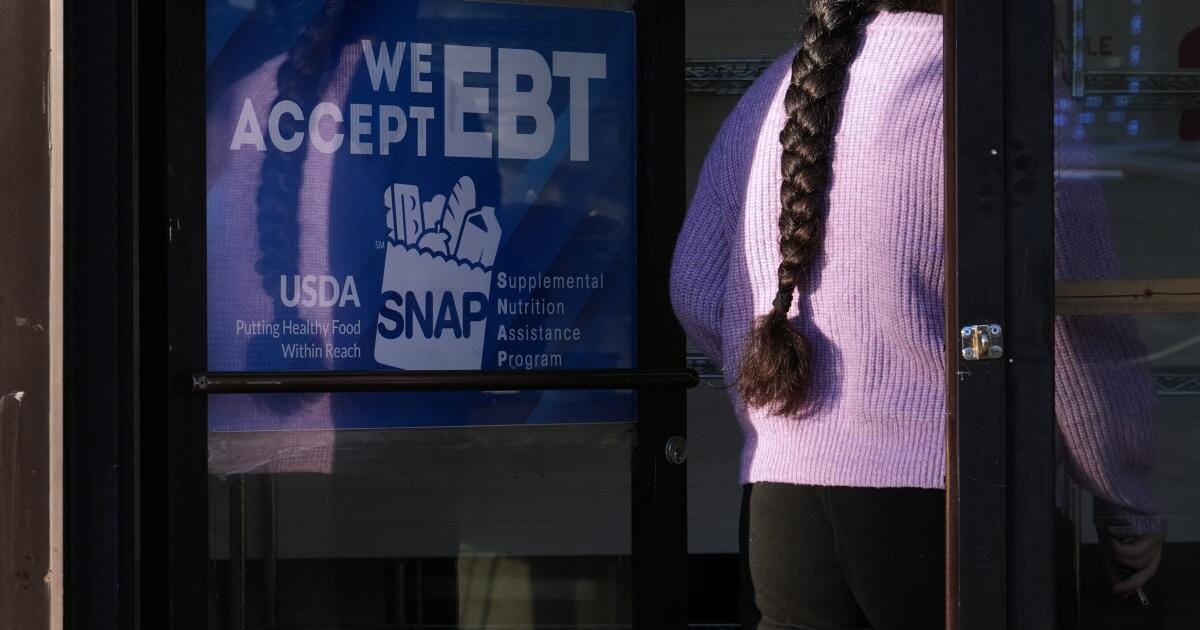The SNAP-funding mess makes L.A.’s food-insecurity crisis clear
A strange scene unfolded at the Adams/Vermont farmers market near USC last week.
The pomegranates, squash and apples were in season, pink guavas were so ripe you could smell their heady scent from a distance, and nutrient-packed yams were ready for the holidays.
But with federal funding in limbo for the 1.5 million people in Los Angeles County who depend on food aid from the Supplemental Nutrition Assistance Program — or SNAP — the church parking lot hosting the market was largely devoid of customers.
Even though the market accepts payments through CalFresh, the state’s SNAP program, hardly anyone was lined up when gates opened. Vendors mostly idled alone at their produce stands.
A line of cars stretches more than a mile as people wait to receive a box of free food provided by the L.A. Food Bank in the City of Industry on Wednesday.
(Genaro Molina/Los Angeles Times)
As thousands across Southern California lined up at food banks to collect free food, and the fight over delivering the federal allotments sowing uncertainty, fewer people receiving aid seemed to be spending money at outdoor markets like this one.
“So far we’re doing 50% of what we’d normally do — or less,” said Michael Bach, who works with Hunger Action, a food-relief nonprofit that partners with farmers markets across the greater L.A. area, offering “Market Match” deals to customers paying with CalFresh debit cards.
The deal allows shoppers to buy up to $30 worth of fruit produce for only $15. Skimming a ledger on her table, Bach’s colleague Estrellita Echor noted that only a handful of shoppers had taken advantage of the offer.
All week at farmers markets where workers were stationed, the absence was just as glaring, she said. “I was at Pomona on Saturday — we only had six transactions the whole day,” she said. “Zero at La Mirada.”
CalFresh customers looking to double their money on purchases were largely missing at the downtown L.A. market the next day, Echor said.
A volunteer loads up a box of free food for a family at a drive-through food distribution site in the City of Industry.
(Genaro Molina/Los Angeles Times)
“This program usually pulls in lots of people, but they are either holding on to what little they have left or they just don’t have anything on their cards,” she said.
The disruption in aid comes as a result of the Trump administration’s decision to deliver only partial SNAP payments to states during the ongoing federal government shutdown, skirting court order to restart funds for November. On Friday night, Supreme Court Associate Justice Ketanji Brown Jackson temporarily blocked the order pending a ruling on the matter by the U.S. Circuit Court of Appeals.
But by then, CalFresh had already started loading 100% of November’s allotments onto users’ debit cards. Even with that reprieve for food-aid recipients in California, lack of access to food is a persistent problem in L.A., said Kayla de la Haye, director of the Institute for Food System Equity at USC.
A study published by her team last year found that 25% of residents in L.A. County — or about 832,000 people — experienced food insecurity, and that among low-income residents, the rate was even higher, 41%. The researchers also found that 29% of county residents experienced nutrition insecurity, meaning they lacked options for getting healthy, nutritious food.
Those figures marked a slight improvement compared to data from 2023, when the end of pandemic-era boosts to state, county and nonprofit aid programs — combined with rising inflation — caused hunger rates to spike just as they did at the start of the pandemic in 2020, de la Haye said.
“That was a big wake-up call — we had 1 in 3 folks in 2020 be food insecure,” de la Haye said. “We had huge lines at food pantries.”
But while the USC study shows the immediate delivery of food assistance through government programs and nonprofits quickly can cut food insecurity rates in an emergency, the researchers discovered many vulnerable Angelenos are not participating in food assistance programs.
Despite the county making strides to enroll more eligible families over the last decade, de la Haye said, only 29% of food insecure households in L.A. County were enrolled in CalFresh, and just 9% in WIC, the federal nutrition program for women, infants and children.
De la Haye said participants in her focus groups shared a mix of reasons why they didn’t enroll: Many didn’t know they qualified, while others said they felt too ashamed to apply for aid, were intimidated by the paperwork involved or feared disclosing their immigration status. Some said they didn’t apply because they earned slightly more than the cutoff amounts for eligibility.
Even many of those those receiving aid struggled: 39% of CalFresh recipients were found to lack an affordable source for food and 45% faced nutrition insecurity.
De la Haye said hunger and problems accessing healthy food have serious short- and long-term health effects — contributing to higher rates of heart disease, diabetes and obesity, as well greater levels of stress, anxiety and depression in adults and children. What’s more, she said, when people feel unsure about their finances, highly perishable items such as fresh, healthy food are often the first things sacrificed because they can be more expensive.
The USC study also revealed stark racial disparities: 31% of Black residents and 32% of Latinos experienced food insecurity, compared to 11% of white residents and 14% of Asians.
De la Haye said her team is analyzing data from this year they will publish in December. That analysis will look at investments L.A. County has made in food system over the last two years, including the allocation of $20 million of federal funding to 80 community organizations working on everything from urban farming to food pantries, and the recent creation of the county’s Office of Food Systems to address challenges to food availability and increase the consumption of healthy foods.
“These things that disrupt people’s ability to get food, including and especially cuts to this key program that is so essential to 1.5 million people in the county — we don’t weather those storms very well,” de la Haye said. “People are just living on the precipice.”







